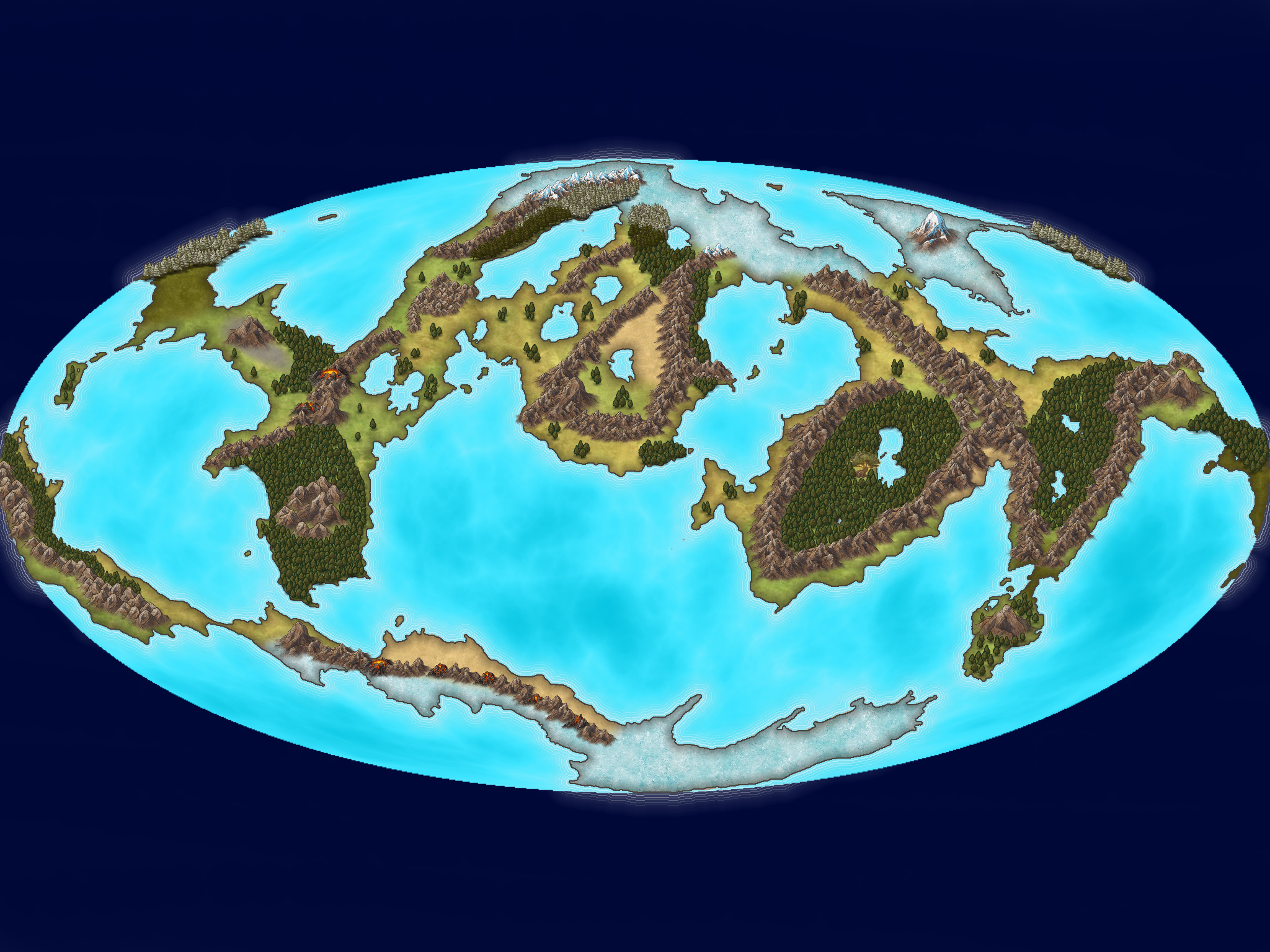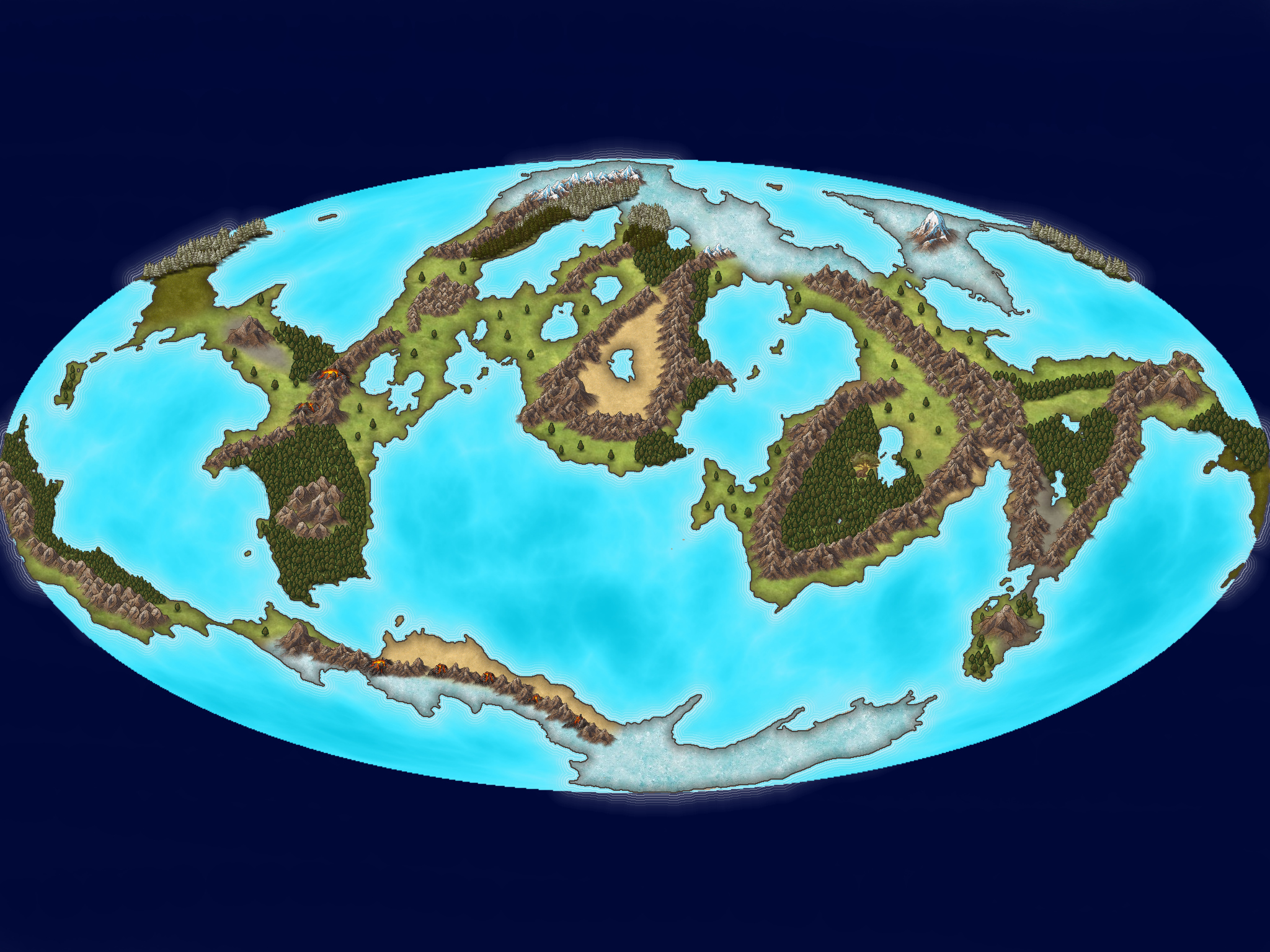The Wasting
The Wasting is one of the many manifestations of the Great Strife - the god-war that occured twenty-two hundred years ago. The result of a blight inflicted on the lands by Orcish priests of Ghaa’raagh the Render as a way to get at their hated Elvish enemies, parts of Cartyion are still recovering, and some regions will never be the same. It was the god's secret ambition to wipe out all flora on the world; fortunately this fate was averted.
The Feywood was not spared the devasation. Though the Elves and Fey were able to hold back the worst effects of the blight and keep the core of the Forest alive, the Wasting drastically reduced the size of the once-vast forest. Recently, the Forest has begun to reclaim some of the land that it once occupied, but it will likely never return to its former size and glory.
The Feywood was not spared the devasation. Though the Elves and Fey were able to hold back the worst effects of the blight and keep the core of the Forest alive, the Wasting drastically reduced the size of the once-vast forest. Recently, the Forest has begun to reclaim some of the land that it once occupied, but it will likely never return to its former size and glory.
Manifestation
The effects of the Wasting at the time of the Great Strife were to attack all forms of flora wherever it spread. Wherever it was planted by the Orcish priests, it killed off trees, grasses, flowers, and anything else that grew out of the ground. The resulting terrain was barren and grey. Windswept choking dust filled the air. In some of the land south of the Feywood, the Wasting combined with the sinking of the land itself to produce brackish, dangerous swamps.
In the time since the Wasting occured, the effects have softened somewhat. Grasses seem to be the most resistant to the lingering effects of the Blight. Trees have been the most sensitive to the traces of evil that remain in the earth. In the areas where the trees have not returned, but the Folk have, farmers sometimes struggle to persuade the earth to yield good crops. Herdsmen find the grasslands are not as rich as they could be, so it is necessary to move the flocks often.
In the time since the Wasting occured, the effects have softened somewhat. Grasses seem to be the most resistant to the lingering effects of the Blight. Trees have been the most sensitive to the traces of evil that remain in the earth. In the areas where the trees have not returned, but the Folk have, farmers sometimes struggle to persuade the earth to yield good crops. Herdsmen find the grasslands are not as rich as they could be, so it is necessary to move the flocks often.
Localization
Because of the efforts of the Elves and Fey to keep the Feywood alive, the effects of the Wasting were strongest at the extreme northern and southern edges of the Forest.
The Northern edges of the Feywood retreated several hundred miles from the northern coast, and while much of the affected land is now more fertile and productive than it was immediately after the Wasting, it is not the same. Today, the lands nearest the coast are being farmed, but the farmers and herdsmen there find it difficult to coax life out of the ground. A narrow band of forest, now called the Oakwood Forest has grown up a few hundred miles south of the coast, but the trees here are twisted and gnarled as if they still struggle to grow against the effects of the blight. The land between the Oakwood and what is now the northern edge of the Feywood also continues to suffer the effects of the Wasting. Here, the grasses and shrubs have returned, but the trees have not. Only a few small pockets of woodland can be found, and even trees planted by farmers struggle against what remains in the earth.
The Southern edges of the Feywood have not been as successful in returning to their original glory. While the encroachment into the original forest was not as severe as it was in the North, this land lost to the Wasting over two thousand years ago has been far more resistant to recovery. It remains essentially barren and lost - unable to support anything more than scraggly patches of dried grass and a stunted, thorny shrub or two. Some mosses and lichens have grown, giving the Elves hope that one day the land here will be healthy once more, But for now, it is simply barren, rocky, and grey.
Further south, the narrow isthmus leading to the Spearhead Peninula where the Dwarven Lonely Delve stands will never return to its former forested glory; the land itself here sank during the Strife; it is now a brackish swamp. While vegetation has returned, it is a dark, sickly vegetation that has become a haven for numerous dark and dangerous creatures.
The Northern edges of the Feywood retreated several hundred miles from the northern coast, and while much of the affected land is now more fertile and productive than it was immediately after the Wasting, it is not the same. Today, the lands nearest the coast are being farmed, but the farmers and herdsmen there find it difficult to coax life out of the ground. A narrow band of forest, now called the Oakwood Forest has grown up a few hundred miles south of the coast, but the trees here are twisted and gnarled as if they still struggle to grow against the effects of the blight. The land between the Oakwood and what is now the northern edge of the Feywood also continues to suffer the effects of the Wasting. Here, the grasses and shrubs have returned, but the trees have not. Only a few small pockets of woodland can be found, and even trees planted by farmers struggle against what remains in the earth.
The Southern edges of the Feywood have not been as successful in returning to their original glory. While the encroachment into the original forest was not as severe as it was in the North, this land lost to the Wasting over two thousand years ago has been far more resistant to recovery. It remains essentially barren and lost - unable to support anything more than scraggly patches of dried grass and a stunted, thorny shrub or two. Some mosses and lichens have grown, giving the Elves hope that one day the land here will be healthy once more, But for now, it is simply barren, rocky, and grey.
Further south, the narrow isthmus leading to the Spearhead Peninula where the Dwarven Lonely Delve stands will never return to its former forested glory; the land itself here sank during the Strife; it is now a brackish swamp. While vegetation has returned, it is a dark, sickly vegetation that has become a haven for numerous dark and dangerous creatures.
Type
Metaphysical, Divine
Effects
- trees wither and die; their trunks rapidly rot away
- grasses, low plants and flowers wither and die
- fauna that eats the dying plants themselves become poisoned
- seeds planted in the ground will not germinate
- some transplants into affected ground still fail even after twenty-two hundred years





Comments